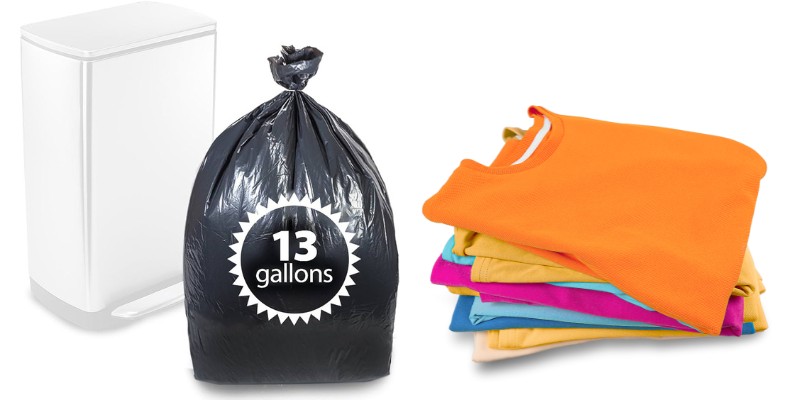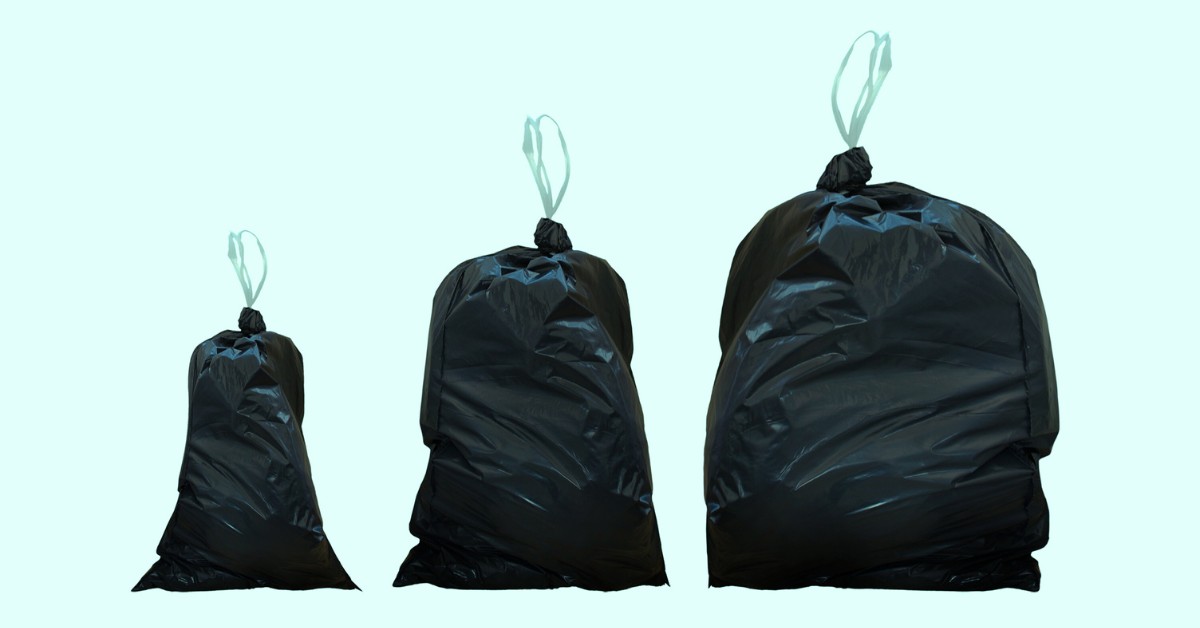How Many Shirts Fit in a Garbage Bag
Have you ever wondered about the capacity of a humble garbage bag? It’s not just a vessel for trash; it can also serve as an unconventional measuring tool. Understanding space utilization is more than an intellectual exercise – it’s a practical skill that can transform your everyday life.
So, let’s dive into this intriguing question: How many shirts can you fit into a garbage bag?
First, there are two key factors to consider: the size of the garbage bag and the type of shirt. Garbage bags vary widely, from standard 13-gallon kitchen bags to larger 30- or even 55-gallon outdoor bags. Shirts come in all shapes and sizes, from petite children’s wear to oversized adult attire. A thick flannel shirt takes up more space than a lightweight summer tee.
Equally important is how you fold your shirts. The right technique can significantly increase the number of shirts that fit your chosen bag. For instance, Marie Kondo’s folding method maximizes space while maintaining neatness.
Remember it's not recommended to store clothes in plastic bags for a long time due to moisture buildup which can lead to mold and mildew.
Now that we’ve set our parameters, let’s delve into our experimental process.
We selected standard adult medium-sized cotton t-shirts and 13-gallon kitchen garbage bags for consistency in our experiment. We used three different folding techniques – regular fold, roll, and Marie Kondo method – packing each folded shirt carefully to maximize space utilization.
We repeated this process multiple times for each folding technique to ensure accuracy in our results.



So what did we find?
We could comfortably fit approximately 20 shirts into the bag for regular folding methods without straining its limits. Rolling allowed us slightly more room – around 25 shirts fitted neatly inside. However, when we employed Marie Kondo’s folding method – which involves creating compact rectangles from each shirt – we accommodated an astonishing 30 shirts!
These results underscored the significance of factors such as folding methods and efficient packing when maximizing storage capacity.
But what does this mean beyond just stuffing shirts into trash bags?
Imagine packing for travel or looking for ways to save storage space at home; understanding how much you can fit in confined spaces becomes invaluable knowledge!
Take Jane Doe from New York City, who lives in a small apartment with limited closet space; she used these principles with her clothing and other items like bed linens and towels by using vacuum-sealed storage bags instead of traditional closets or drawers.
Or consider John Smith, who travels frequently for work; he applies similar techniques when packing his suitcase, ensuring he has enough clothes without needing extra luggage, thereby saving on baggage fees!
This experiment isn’t just about maximizing what fits inside a garbage bag—it’s about rethinking how we use the spaces around us daily!
While the number of shirts fitting inside your average trash bag depends on several variables, including the size/type of both shirt and bag along with your folding technique – one thing is clear: proper planning and effective usage can drastically improve storage efficiency whether it be in garbage bags or any other areas within our daily lives!
Now, here’s my challenge for you: try experimenting at home! Use different types of clothing, bags, or storage containers. Test out various folding methods. You might be surprised at how much you can fit!
After you’ve tried optimizing space at home, consider how this knowledge can extend to other areas of life. Maybe you’re planning a camping trip and must pack as efficiently as possible. Or perhaps you’re moving house and want to minimize the number of boxes. The principles remain the same: understanding your available space, the items you need to fit, and the best way to arrange them.
This kind of thinking isn’t limited to physical objects either. It can apply just as effectively in digital environments. Think about organizing files on your computer or packing data into storage devices – it’s all about maximizing efficiency!
Moreover, this experiment offers a symbolic lesson: making the most of what we have is an essential life skill. Whether it’s our time, resources, or even personal talents – efficient utilization often leads us toward achieving more than we initially thought possible.
Our seemingly quirky experiment with shirts and garbage bags carries profound implications for everyday life – from practical applications in home organization and travel packing to digital data management and even broader life philosophies!
So next time you see a garbage bag or fold a shirt, remember – there’s much more than meets the eye! And that makes this journey fascinating; through exploration and curiosity, we continue learning new ways of navigating our world more effectively.
Now that you’ve gained insights from our experiment, why not share your own? We’d love for you to join this conversation about space utilization techniques! Share your unique methods or unexpected measurements – who knows? Your idea might be just what someone else needs!
In conclusion, we found out how many shirts fit into a garbage bag (with variations based on several factors). But more importantly – we discovered how asking unusual questions can lead us down paths of unexpected learning opportunities that enhance our practical skills and broaden our perspectives.
So go ahead! Experiment! Explore! And don’t forget to share what you learn along the way because every bit of knowledge adds up in this incredible journey called life!

